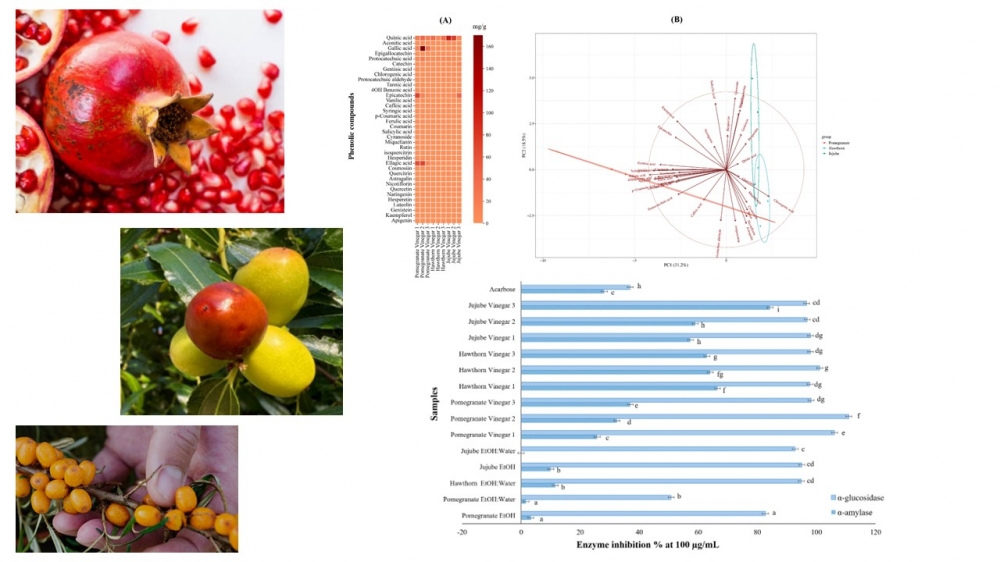JOURNAL 3655
Records of Agricultural and Food Chemistry
Available Online: November 10,2025
p.1 - 14
http://doi.org/10.25135/rfac.38.2510.3655 (DOI number will be activated after the manuscript has been available in an issue.)
Viewed 27 times.
-
Büşra Umut Oyman

-
Çağlayan Ünsal Gürer

-
Ismail Yener

-
Mehmet Akdeniz

-
Serkan Yigitkan

-
Mustafa Abdullah Yılmaz

-
Suzan Tireki

-
Abdulselam Ertaş

-
Aslı Barla Demirkoz

GRAPHICAL ABSTRACT

ABSTRACT
This study aimed to compare the phenolic profile and antidiabetic activities of extracts and vinegars of pomegranate, hawthorn, and jujube. Extracts and vinegars of plants were evaluated by LC–MS/MS for their individual phenolic profiles. Antidiabetic potential was assessed in vitro by measuring α-amylase and α-glucosidase inhibition with acarbose as a positive control. Results showed unique phenolic profiles: pomegranate extracts and vinegar (especially pomegranate vinegar 2) were enriched in ellagic acid (68.76 mg/g) derivatives; hawthorn 70% ethanolic extract in quinic acid (89.355 mg/g) and hawthorn vinegar 1 in quinic acid (35.899 mg/g) and flavonol glycosides; and jujube ethanolic extract in quinic acid (77.803 mg/g), jujube vinegar 1 in quinic acid (101.568 mg/g) and protocatechuic derivatives. Vinegar fermentation enhanced phenolic recovery, resulting in higher levels of bioactive compounds compared to extracts, and it improved the recovery of phenolics, as the amounts of bioactive compounds were higher in vinegars than in extracts. Both pomegranate and hawthorn vinegar 2 exerted the highest α-glucosidase inhibitions (110.97±3.01 and 101.08±1.71). Jujube vinegars (especially jujube vinegar 1) showed complementary features with greater enzyme inhibitions (97.96±1.27) along with previously reported insulin-sensitivity properties. This is the first study to provide a comparative evaluation of phenolic composition and antidiabetic potential of pomegranate, hawthorn, and jujube vinegars.
KEYWORDS- Pomegranate
- Hawthorn
- Jujube
- Vinegars
- Phenolic
- Enzym Inhibition